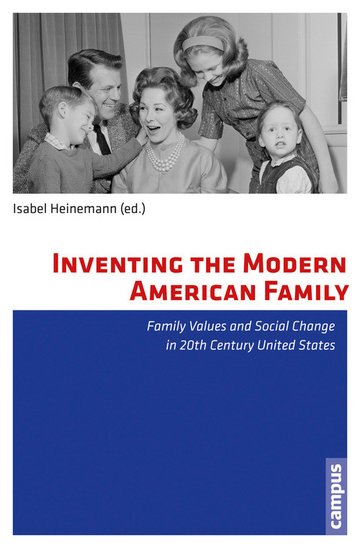Family Values and Social Change in Modern Western Societies
The international research literature on the history of the family in Western societies describes changing family structures during the 20th century, but does not raise the question of whether family values changed as well-a gap that this volume strives to fill. Another objective is to provide some clarification of the notions of 'modernity' and 'modernism' implied when describing transformations of family norms and gender values - also largely untouched in the recent research literature on the family. In this volume, we use 'modernity' and 'modern society' not in a normative sense but as a label for the heyday of industrial society ranging from the last decade of the 19th century well into the seventies. Referring to American anthropologist James C. Scott, German historian Ulrich Herbert has coined the term 'high modernity' to describe this period in Western Europe. Although the term is well suited to express the contemporaries' experiences of high industrialization, mass society and acceleration in all fields of life, it nonetheless includes certain semantic problems: Scott defines high modernism as a political ideology that merged absolute belief in progress with visions of technocratic and authoritarian omnipotence, regulating people's values and lifestyles though central planning. Due to Scott, high modernism has to be seen as an inhumane culmination of modernity. In his definition, the term is well suited to characterize the extreme fervor displayed by social engineers and experts, eager to rationalize fields as diverse as urban planning, human reproduction, and development policy. As an analytical framework for studying American society and family values during the 20th century, however, it seems less appropriate. Consequently, this volume's contributions will instead speak of the epoch of 'modernity.' When analyzing the idealized vision of 'the modern American family' as a guideline for social policies and Americanization programs, we are fully aware of its character as a heuristic construct that nonetheless entailed severe sociopolitical consequences.
With regard to the volume's interest in exploring the linkage between processes of social and normative change, we also employ the term 'modernity' to express the contemporaries' feeling of acceleration and change. Finally, instead of referring to the economic-technical or political modernization, we rather focus on the 'modernization of lifestyles, norms and political attitudes in the sense of participation, pluralism and the reduction of hierarchical and authoritarian structures.' In this context we refer to Daniel Bell, who, in his 1990 essay on modernity and modernism, declared the respect of individual rights a constituent of a humane understanding of modernity: 'Modernity is individualism, the effort of individuals to remake themselves and, where necessary, to remake society in order to allow design and choice. ... It is the nineteenth-century heritage at its best: individuals, liberty, and the sanctity of life.' Bell's rather positive framing of the term 'modernity' does-in the framework of this volume-not mean to blur the racist and socially repressive character of the hegemonic family ideal or the family and welfare policies conceived to foster this ideal. On the contrary, the contributions demonstrate how the modern American family was constructed at the expense of nonwhite single mothers, immigrant families and working-class youth-just to give some examples. Here, expert and state intervention thoroughly revealed the repressive side of modernity and modern policy-making in the sense of James Scott's high modernism.
Other concepts like that of multiple modernities coined by Shmuel N. Eisenstadt or even Shalinia Raderia's notion of entangled modernities are quite useful for describing global forms of cultural modernity-as coeval but nonetheless differing processes. For writing the history of Western societies the fluidity of the term multiple modernities and its disregard for the individual pose some problems. Nonetheless, Christof Mauch and Kiran Klaus Patel in their comparative study on Germany and the United States in the era of high industrialization employed the approach quite successfully. Although one may ask whether the modernization processes in the two countries were really as 'competitive' as the two authors contend, the bi-national comparison revealed interesting results in fields as diverse as the welfare state, religion, the media and gender relations. Taking account of the quite heterogeneous character of North American society this volume however follows a national approach, using comparisons with other Western countries as-at best-points of reference to further highlight national traits and developments.
The end of the era of modernity is less contested than the term itself. Unanimously, most authors define the 1970s as a watershed between industrial and post-industrial society, signifying the beginning of the era 'after the boom.' This epoch is commonly understood as being marked by the successive challenging of categories such as progress, dynamics, productivity and accumulation of wealth, well described by Natasha Zaretsky in her study of the 1970s American family. As a study of processes of normative change does not primarily reflect economic caesura, some of the contributions of this volume extend the scope of their investigation well into the 1990s, which allows them to take into account the effects of the expansion of the Christian right and also of the conservative rhetoric of the Reagan administration on family values and gender roles.
















